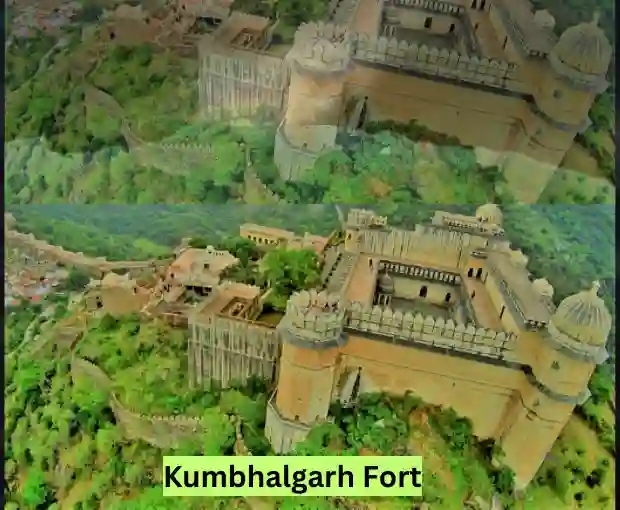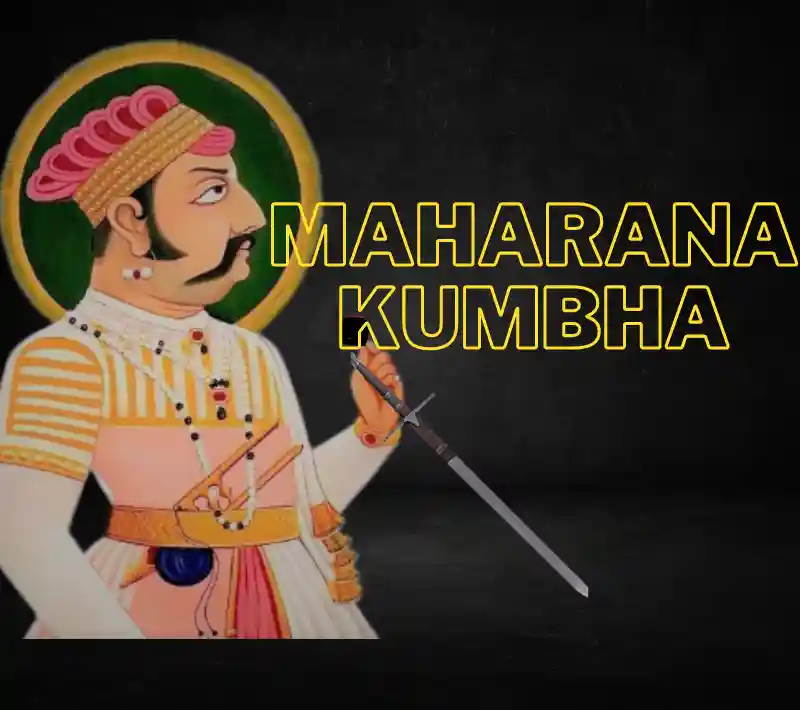Brief Introduction
Maharana Kumbha or widely popular as Kumbha of Mewar was one of the charismatic Rajput kings of Mewar who succeeded the throne in 1433 CE and extended his territories to the north, east and west of India. He was one of the greatest warriors who had never seen any defeat in his all time career . He was ever victorious in war. He had such a power to defeat each one of his enemies in such a miserable way that they were reduced to ashes.
He was a pronounced king who not just extended the territories of Mewar but also got miraculous achievements in erecting massive fortresses for the defense of his kingdom. Out of 84 fortress, he erected 32 of them.
He was given the title of Rajaguru, Chapaguru ( master of archery ), Danaguru, Sailaguru ( master of mountains ) and Paramaguru.
One of his biggest architectural achievements was erecting Kirtistambha in chittor fort, chittorgargh, Rajasthan , soon after defeating Mahmood Khilji in the Battle of Sarangpur in 1448 AD. It is also widely known as Vijay Stambh or the “Tower of Victory ” because it had been made to celebrate his one of the biggest victories.
According to historian Mr. Fergusson ” Vijay Stambh is a pillar of victory like that of Trajan at Rome but in infinitely better taste as an architectural object than the Roman example”.
Kumbhalgarh inscription talks about the personality of Maharana Kumbha as he was the root of the tree of righteouness, home of excellency and generosity , abode of prowess and a symbol of kalpavriksha which grants all desires.
He was a great scholar as well. He had great inclination towards writing poetry, composing drama, annotate, and also wrote multiple treaties on the science of music. one of the finest books written by him is “Sangeetaraja” which is very popular. The title of “Abhinav Bharatacharya” was conferred on him.
Early life
Maharana Kumbha was born in 1417 CE in Madaria, district Rajsamand, Rajasthan , was the eldest son of Rana Mokal Singh and Sobhagya Devi, daughter of Jailmal Sankhla.
After the murder of his father Mokal Singh by his brothers Chacha and Mera in 1433 CE , Maharana Kumbha succeeded the throne at the age of 16.
Military achievements
- He conquered Mewar, Mandalgarh, Sinhapur, Khatoo, the district of Toda, Ajmer , Chatsoo.
- He then captured Bundi, Bamoda and Haravati and Giripur.
- He conquered and occupied the territory of the Sultan of Delhi.
- He took the control of Gokarana mountain and subjugated the Kingdom of Abu and built achalgarh on the top of it.
- Multiple times he defeated the kings of Malwa and Gujarat and received the title of Hindu Suratran (Sultan).
- He also conquered the most famous fortress of Ranthambore.
- His Excellency made him to make Sapadalaksha ( ancient name of shivalika Hills ) his tributary and then imposed a tax on the salt produced there. He also imposed tax on salt mines at Didwana which ultimately increased the revenue.
- He then acquired the region of Narwar, Jahazpur, Malpura, Yoginipur and Dungarpur.
- He took the possession of Hills Fort of Gargarat which is now called Gangadhar.
- Maharana Kumbha fortified the defences of Chittor by erecting 7 of its Gates and they are Rampole, Hanuman Pole, the Bhairavapol, the Lakshmipol, the Chamunda Pol tarapol and Rajpol.

Architectural achievements – Fortress made by Maharana Kumbha
- The magnificent Kumbhalgarh fortress which took around 15 years (1443- 1458 AD) to get completed is one of the most famous historical fortresses in India. It is located about 60 miles north of Udaipur on a high peak of Aravali Hills.
- Kirtistambh or Tower of victory is the most famous work of Maharana Kumbha which was erected in 1448 AD to celebrate his victory against Mahmood Khilji of Malwa. The Fortress took around 10 years to get completed.
- He built a Fort of Machan to protect the Shera Nula and Devgadh against the mers of Aravali. He also built the Fort of kolana and Vairat near Badnor.

Architectural achievements – Building Temples
- One of the most noteworthy temple built by Maharana Kumbha in 1438 AD was the temple of Ranpur, the first of the Jain Tirthankaras which is dedicated to Rishabhdev , is his one of the remarkable work which was erected in the Sadri Pass leading from the Western descent of the highlands of Mewar.
- In 1458 AD, he built Mamadeva temple in which on marbel slabs, there is mention of the history of Mewar from the time of Guhil, the founder of the royal family to Maharana Kumbha.
- The famous temple of Eklingaji in Mewar was renovated by Kumbha and a huge Kumbha Mandapa was created in front of the sanctum sanctorum.
- Maharana Kumbha made a super magnificent Temple called Kumbha Swami which is located to the south of Bada Mahal. It is called Govind Shyam temple in “akbarnama”.
- He had also erected the temple of Kumbha Shyam at Chittorgarh.
Achievements in Arts and literature
- Maharana Kumbha was a great poet and scholar. According to the Kumbhalgarh inscription , he was a great Patron of Music and literature.
- He authored Chandishastaka , Eklinga Mahatmaya, sangita mimamasa, commentary on Geeta Govinda .
- He was well- versed in Vedas, smritis, Natya Shastra, Polity , Ganit , Vyakaran, Tarak, Upnishad and other granthas. He also knew multiple languages.
Death
He was murdered in 1468 AD by his own eldest son, Uday Karan ( Uday Singh ) when he was sitting and praying at the edge of Mamadeva near the temple of Kumbhaswami at Kumbhalgarh. After assassinating his own father Uday Singh popularly called as Uda the Hatiaro ( Parricide ) .
Maharana Kumbha was killed by his own son Uday Singh because he had the fear of losing the throne if Rai mal became successful in getting the favour of Kumbha then his all unethical way to access the throne would get stopped . The killing of his own father , Maharana Kumbha , shocked the chieftains and people of the Mewar .
Though Uday Singh ascended the throne of Mewar , he was living in a constant fear of loosing the throne at any moment . He didn’t get any kind of support from the people of Mewar for his henious crime .To get the support of neighbouring chieftains , he started to squander the resources of his kingdom but nothing good came out of it for him . Finally , he was driven from throne by the people of Mewar and his younger brother Rai Mal was crowned as Maharana of Mewar in 1473 AD .
You may like to read :
Ahilyabai Holkar : A great fighter queen who ruled Malwa
Lachit borphukan : The story of unsung hero of Ahom dynasty
Rudramadevi : First warrior queen represented as a remarkable King
Jogendra Nath Mandal : First law minister of Pakistan who came back to India
